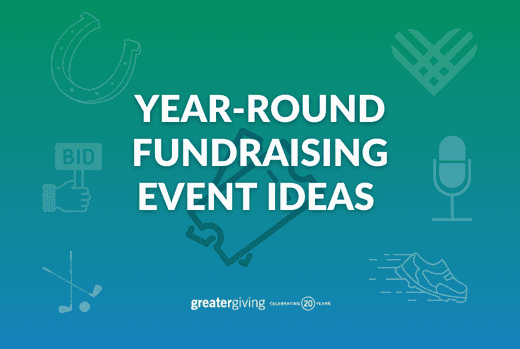The Role of Neighborhood Involvement in Nonprofit Fundraising: Building Lasting Relationships for Sustainable Support
Area interaction is significantly acknowledged as an essential element of successful nonprofit fundraising. By cultivating real connections with regional stakeholders, companies can grow trust and commitment, which are vital for sustainable support. However, the strategies and techniques utilized to engage neighborhoods differ commonly, raising vital questions about performance and impact. What are the ideal practices for cultivating these crucial connections, and how can nonprofits gauge their success in this arena? Recognizing these dynamics could substantially affect the future of fundraising efforts and the general objective of nonprofit organizations.
Comprehending Community Engagement
Community engagement is a vital component of effective not-for-profit fundraising initiatives. It refers to the approaches and activities that organizations utilize to link with their neighborhood areas, promoting connections that are equally advantageous. Understanding area interaction entails recognizing its complex nature, which consists of cooperation, participation, and outreach. Nonprofits need to recognize essential stakeholders-- such as community members, regional companies, and various other companies-- to produce reliable interaction techniques.
Effective neighborhood interaction is based on active listening and responsiveness to the requirements and interests of the area. This procedure involves getting feedback, understanding neighborhood characteristics, and ensuring that the company's mission aligns with regional priorities. Engaging the area can take numerous types, including public conferences, volunteer opportunities, and partnership campaigns, each designed to motivate involvement and financial investment in the organization's objectives.
Moreover, neighborhood involvement should be come close to as a continuous dialogue as opposed to a single initiative. By fostering an inclusive setting where neighborhood voices are heard and valued, nonprofits can construct a strong foundation for future fundraising ventures. Inevitably, a deep understanding of community involvement equips organizations to create authentic links that enhance their overall efficiency and sustainability.
Benefits of Solid Relationships
Strong partnerships created with neighborhood interaction yield numerous benefits for not-for-profit fundraising efforts. First and primary, these partnerships foster trust fund and credibility, necessary elements in encouraging contributors to contribute. When possible advocates see a not-for-profit proactively entailed in their area, they are more probable to count on its objective and influence.

Additionally, these relationships promote efficient interaction. Nonprofits can leverage their connections to share tales of effect, updates, and requires, guaranteeing that supporters stay enlightened and engaged. This open line of communication not only enhances bonds yet additionally urges word-of-mouth promotion, broadening the not-for-profit's reach.
Lastly, solid neighborhood ties can bring in new partners and enrollers. People and businesses are more inclined to straighten with companies that show significant community involvement, giving additional resources and support that can significantly boost fundraising capabilities. Thus, growing durable partnerships with community engagement is important to a not-for-profit's long-term fundraising success.
Techniques for Reliable Interaction
Just how can nonprofits successfully engage their communities to enhance fundraising initiatives? Creating targeted approaches is crucial for cultivating purposeful connections. Initially, leveraging social media sites systems enables companies to share their mission dynamically and interactively, getting to a more comprehensive target market. Routine updates, involving content, and calls-to-action can galvanize area passion and engagement.
Second, organizing neighborhood occasions, such as workshops, volunteer chances, or fundraising drives, assists in face-to-face communication, permitting nonprofits to showcase their impact and initiatives. These occasions not only raise funds yet additionally grow relationships and enable neighborhood members to involve directly with the cause.
Third, applying personalized communication techniques can boost engagement. Tailoring messages to specific benefactor segments based on interests and past payments cultivates a feeling of belonging and financial investment in the organization's objective.
Last but not least, producing collaborations with regional businesses and community leaders can amplify outreach initiatives. Joint initiatives can boost presence and reputation, showing a cumulative commitment to the community's wellness. By incorporating these techniques, nonprofits can construct long lasting connections that boost fundraising efforts and drive lasting support.
Determining Involvement Success
While involving the community is important for effective nonprofit fundraising, gauging the performance of these interaction efforts is similarly vital. Developing clear metrics allows organizations to examine how well they are attaching with their audience and accomplishing their fundraising objectives. Key efficiency signs (KPIs) such as benefactor retention rates, volunteer participation degrees, and interaction on social networks platforms offer concrete data for analysis.

Regularly assessing these metrics makes it possible for organizations to pivot their techniques when essential, guaranteeing that neighborhood interaction his comment is here stays lined up with their total objective. Additionally, sharing these outcomes with stakeholders cultivates transparency and develops trust fund, urging further area involvement. Eventually, a robust dimension structure not just notifies future fundraising efforts but additionally enhances the partnership between the not-for-profit and its supporters, preparing for sustainable success.
Instance Studies in Neighborhood Impact
Numerous study illustrate the profound impact that neighborhood engagement can have on not-for-profit fundraising success. One notable example is the "Food for Thought" effort, where a neighborhood food financial institution partnered with organizations and institutions to host area dinners. These events not just raised funds yet additionally fostered a sense of belonging among individuals, substantially raising over at this website donor retention rates.
One more compelling instance is the "Green Spaces Project," which involved regional citizens in the revitalization of city parks. This campaign not just garnered financial support from regional organizations yet additionally grew a volunteer base that added to continuous upkeep and programs. The blog here feeling of possession and pride amongst neighborhood participants equated into sustained contributions.
In the world of arts, the "Art for All" project successfully involved neighborhood musicians and clients to develop joint art setups, bring about increased visibility and contributions for a neighborhood arts not-for-profit.
These instances highlight that when nonprofits focus on neighborhood involvement, they can create long-term relationships that boost fundraising initiatives, making certain lasting assistance and fostering a vivid area society. Such situations demonstrate that neighborhood interaction is not merely a strategy but an important column of not-for-profit success.
Final Thought
In final thought, area engagement is integral to the success of nonprofit fundraising initiatives. Inevitably, a robust foundation of neighborhood support not only intensifies fundraising potential however likewise grows a culture of partnership, crucial for achieving long-term business objectives and maintaining meaningful effect. fundraising consultant.
Nonprofits must recognize essential stakeholders-- such as neighborhood participants, local companies, and various other organizations-- to produce efficient involvement strategies.

In verdict, neighborhood involvement is essential to the success of not-for-profit fundraising efforts.